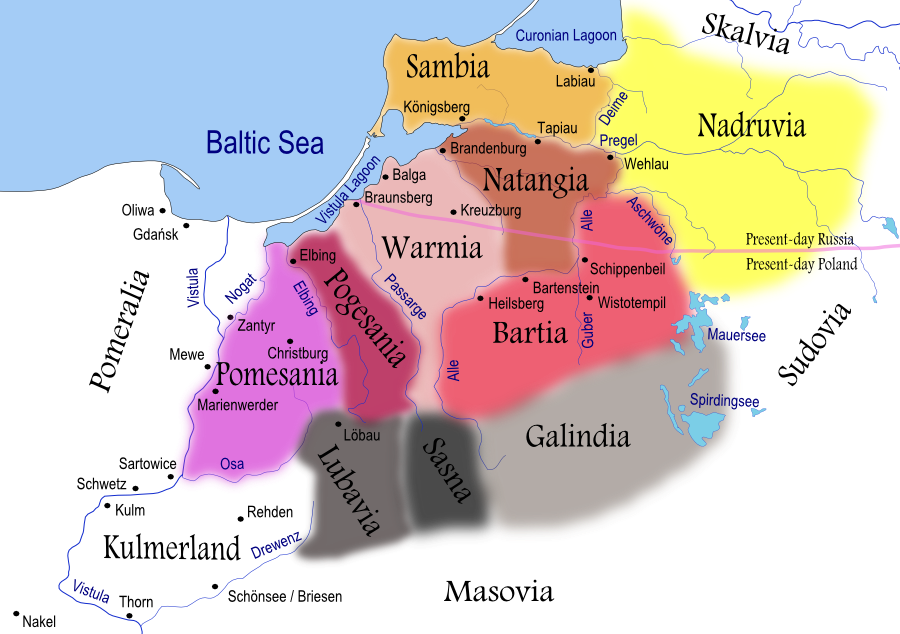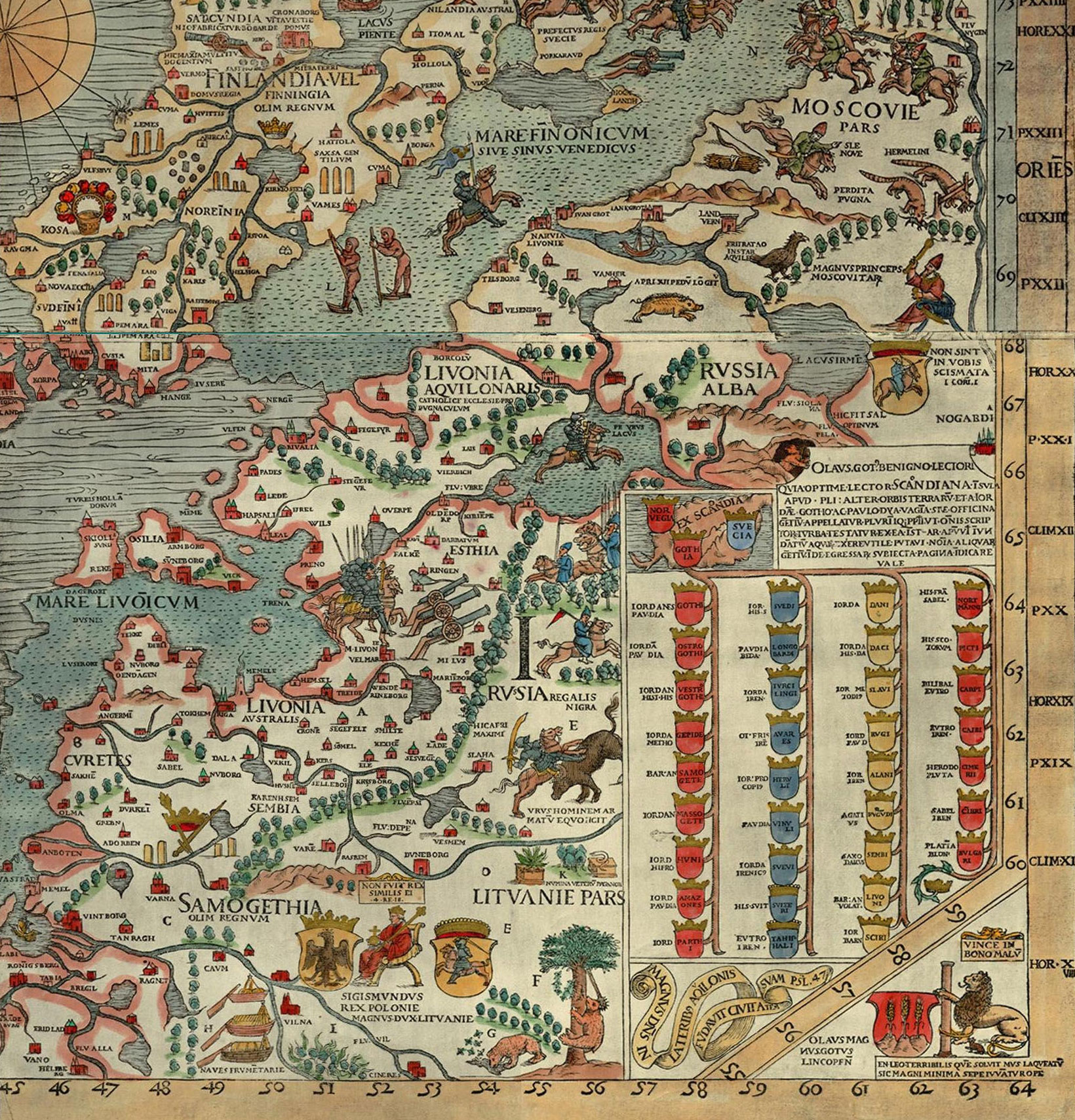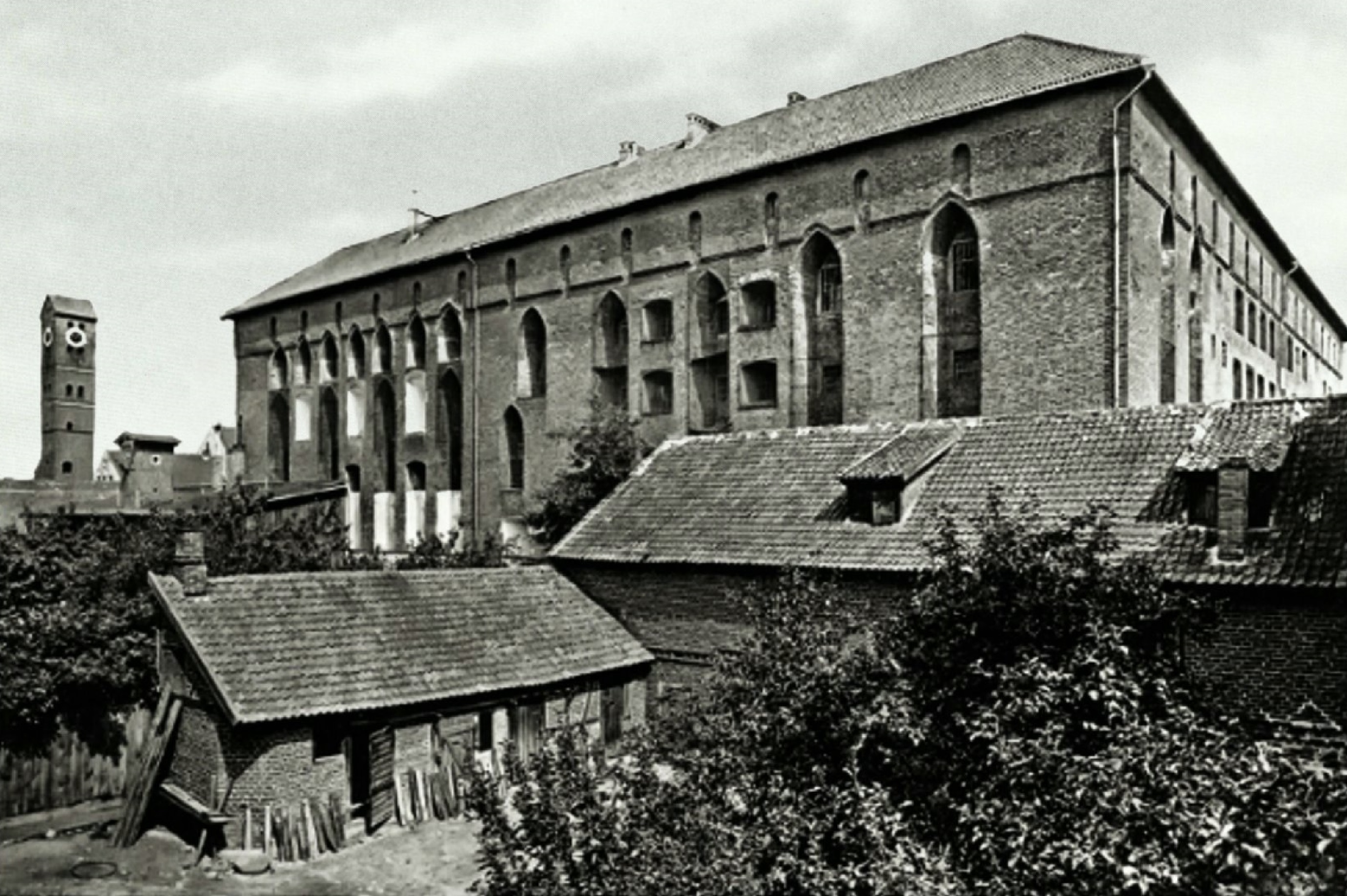|
Scalvians
The Scalovians (; ), also known as the Skalvians, ''Schalwen'' and ''Schalmen'', were a Balts, Baltic tribe related to the Old Prussians, Prussians. According to the ''Chronicon terrae Prussiae'' of Peter of Dusburg, the now extinct Scalovians inhabited the land of Scalovia south of the Curonians and Samogitians, by the lower Neman River ca. 1240. Geography This region is located at both sides of the river Neman River, Memel north of Nadruvians and south of Samogitia. In the North-East it stretched to rivers Šešupė River, Šešupė, Ežeruona and Jūra. In the East it bordered on Yotvingians, Sudovia, in the North-West on river Minija, in the West on the Curonian Lagoon and in the South-West on river Nemunas Delta, Gilija. The center were the towns of Rusnė, Neman (town), Ragainė and Sovetsk, Kaliningrad Oblast, Tilžė. Name The meaning is uncertain: ''skalwa'' "splinter (living split off)" or ''skalauti'' "between waters". According to Prussia (region), Prussian legends, ... [...More Info...] [...Related Items...] OR: [Wikipedia] [Google] [Baidu] |
Prussia (region)
Prussia (; ; ; ; ; //) is a Historical regions of Central Europe, historical region in Central Europe on the south-eastern coast of the Baltic Sea, that ranges from the Vistula delta in the west to the end of the Curonian Spit in the east and extends inland as far as Masuria, divided between Poland (Warmian–Masurian Voivodeship), Russia (Kaliningrad Oblast) and Lithuania (Lithuania Minor). This region is often also referred to as Old Prussia. Tacitus's ''Germania (book), Germania'' (98 AD) is the oldest known record of an eyewitness account on the territory and its inhabitants. Pliny the Elder had already confirmed that the Romans had navigated into the waters beyond the ''Cimbric peninsula'' (Jutland). Swedes (Germanic tribe), Suiones, Sitones, Goths and other Germanic people had temporarily settled to the east and west of the Vistula River during the Migration Period, adjacent to the Aesti, who lived further to the east. Overview The region's inhabitants of the Middle ... [...More Info...] [...Related Items...] OR: [Wikipedia] [Google] [Baidu] |
Balts
The Balts or Baltic peoples (, ) are a group of peoples inhabiting the eastern coast of the Baltic Sea who speak Baltic languages. Among the Baltic peoples are modern-day Lithuanians (including Samogitians) and Latvians (including Latgalians (modern), Latgalians) — all East Balts — as well as the Old Prussians, Curonians, Sudovians, Skalvians, Yotvingians and Galindians — the West Balts — whose languages and cultures are now extinct, but made a large influence on the living branches, especially on literary Lithuanian language. The Balts are descended from a group of Proto-Indo-Europeans, Proto-Indo-European tribes who settled the area between the lower Vistula and southeast shore of the Baltic Sea and upper Daugava and Dnieper rivers, and which over time became differentiated into West and East Balts. In the fifth century CE, parts of the eastern Baltic coast began to be settled by the ancestors of the Western Balts, whereas the East Balts lived in modern-day Belarus, ... [...More Info...] [...Related Items...] OR: [Wikipedia] [Google] [Baidu] |
Baltic Tribes C 1200
Baltic may refer to: Peoples and languages *Baltic languages, a subfamily of Indo-European languages, including Lithuanian, Latvian and extinct Old Prussian *Balts (or Baltic peoples), ethnic groups speaking the Baltic languages and/or originating from the Baltic countries *Baltic Germans, historical ethnic German minority in Latvia and Estonia *Baltic Finnic peoples, the Finnic peoples historically inhabiting the area on the northeastern side of the Baltic sea Places Northern Europe * Baltic Sea, in Europe * Baltic region, an ambiguous term referring to the general area surrounding the Baltic Sea * Baltic states (also Baltic countries, Baltic nations, Baltics), a geopolitical term, currently referring to Estonia, Latvia and Lithuania * Baltic Provinces or governorates, former parts of the Swedish Empire and then Russian Empire (in modern Latvia, Estonia) * Baltic Shield, the exposed Precambrian northwest segment of the East European Craton * Baltic Plate, an ancient tectonic p ... [...More Info...] [...Related Items...] OR: [Wikipedia] [Google] [Baidu] |
Kaliningrad
Kaliningrad,. known as Königsberg; ; . until 1946, is the largest city and administrative centre of Kaliningrad Oblast, an Enclave and exclave, exclave of Russia between Lithuania and Poland ( west of the bulk of Russia), located on the Pregolya, Pregolya River, at the head of the Vistula Lagoon, and the only Port#Warm-water port, ice-free Russian port on the Baltic Sea. Its population in 2020 was 489,359. Kaliningrad is the second-largest city in the Northwestern Federal District, after Saint Petersburg and the List of cities and towns around the Baltic Sea, seventh-largest city on the Baltic Sea. The city had been founded in 1255 on the site of the ancient Old Prussians, Old Prussian settlement ''Twangste'' by the Teutonic Knights during the Northern Crusades, and named ''Königsberg'' ("king's mountain") in honor of King Ottokar II of Bohemia. A Baltic port city, it successively became the capital of the State of the Teutonic Order, the Duchy of Prussia and the provinces of ... [...More Info...] [...Related Items...] OR: [Wikipedia] [Google] [Baidu] |
Lithuania
Lithuania, officially the Republic of Lithuania, is a country in the Baltic region of Europe. It is one of three Baltic states and lies on the eastern shore of the Baltic Sea, bordered by Latvia to the north, Belarus to the east and south, Poland to the south, and the Russian exclave, semi-exclave of Kaliningrad Oblast to the southwest, with a Maritime boundary, maritime border with Sweden to the west. Lithuania covers an area of , with a population of 2.89 million. Its capital and largest city is Vilnius; other major cities include Kaunas, Klaipėda, Šiauliai and Panevėžys. Lithuanians who are the titular nation and form the majority of the country's population, belong to the ethnolinguistic group of Balts and speak Lithuanian language, Lithuanian. For millennia, the southeastern shores of the Baltic Sea were inhabited by various Balts, Baltic tribes. In the 1230s, Lithuanian lands were united for the first time by Mindaugas, who formed the Kingdom of Lithuania on 6 July ... [...More Info...] [...Related Items...] OR: [Wikipedia] [Google] [Baidu] |
Rumbaudas Valimantaitis
Rumbaudas Valimantaitis (; died in 1432) was an influential Lithuanian noble of Zadora coat of arms. He was a son of Valimantas and brother of Mykolas Kęsgaila. He became Elder of Samogitia (1409–1411) and Grand Marshal (1412–1432). He first appears in written sources as a witness to the Pact of Vilnius of January 1401. His patrimony was in Deltuva, but he also had possessions in Samogitia and volost of Svislach. In 1409, he became Elder of Samogitia and instigated the Second Samogitian Uprising on orders of Vytautas, Grand Duke of Lithuania. The uprising grew into the Polish–Lithuanian–Teutonic War and it is believed that Rumbaudas commanded Samogitian troops in the Battle of Grunwald (1410). After the war, he became Grand Marshal of Lithuania while his brother Mykolas Kęsgaila became Elder of Samogitia. In 1413, he was among Lithuanian nobles negotiating the status of Samogitia with Benedict Makrai, a mediator appointed by Sigismund of Luxemburg. In 1422, h ... [...More Info...] [...Related Items...] OR: [Wikipedia] [Google] [Baidu] |
Pagėgiai
Pagėgiai (, ) is a town in south-western Lithuania. It is located in the medieval region of Scalovia in the historic region of Lithuania Minor. It is the capital of Pagėgiai municipality, and as such it is part of Tauragė County. Name The name of the town literally means "at Gėgė" (: grove of alders, hay meadows, fields) and it is believed that the Gėgė river (also Gäge, Jäge) once flowed through the town. History The settlement dates back to the Middle Ages. In 1454, King Casimir IV Jagiellon incorporated the region to the Kingdom of Poland upon the request of the anti-Teutonic Prussian Confederation. After the subsequent Thirteen Years' War (1454–1466) the village was a part of Poland as a fief held by the Teutonic Knights, and thus was located within the Polish–Lithuanian union, later elevated into the Polish–Lithuanian Commonwealth. From the 18th century, it was part of the Kingdom of Prussia, and from 1871 it was also part of Germany, within which it was adm ... [...More Info...] [...Related Items...] OR: [Wikipedia] [Google] [Baidu] |
Tauragė
Tauragė (; see #Names and etymology, other names) is an industrial city in Lithuania, and the capital of Tauragė County. In 2020, its population was 20,956. Tauragė is situated on the Jūra, Jūra River, close to the border with the Kaliningrad Oblast, and not far from the Baltic Sea coast. Although first mentioned in 1507, Tauragė did not receive its town privileges, city charter until 1924, and its coat of arms (a silver hunting horn in a red field) until 1997. The previously small town was significantly developed in the 19th century and early 20th century, however its architecture suffered devastating damages during World War I and World War II. Notable surviving buildings in the city include the Tauragė castle, castle (19th century Russian Empire customs), 19th century Post office, buildings from the 20th century inter-war period, several churches: the Lutheran (built in 1843), the Catholic (1904) and Orthodox (1933). Lithuanian, Swedish and Danish factories operate in ... [...More Info...] [...Related Items...] OR: [Wikipedia] [Google] [Baidu] |
Teutonic Knights
The Teutonic Order is a Catholic religious institution founded as a military society in Acre, Kingdom of Jerusalem. The Order of Brothers of the German House of Saint Mary in Jerusalem was formed to aid Christians on their pilgrimages to the Holy Land and to establish hospitals. Its members have commonly been known as the Teutonic Knights, having historically served as a crusading military order for supporting Catholic rule in the Holy Land and the Northern Crusades during the Middle Ages, as well as supplying military protection for Catholics in Eastern Europe. Purely religious since 1810, the Teutonic Order still confers limited honorary knighthoods. The Bailiwick of Utrecht of the Teutonic Order, a Protestant chivalric order, is descended from the same medieval military order and also continues to award knighthoods and perform charitable work. Name The name of the Order of Brothers of the German House of Saint Mary in Jerusalem is in and in Latin . Thus the term "T ... [...More Info...] [...Related Items...] OR: [Wikipedia] [Google] [Baidu] |
Peter Von Dusburg
Peter of Dusburg (; ; died after 1326), also known as Peter of Duisburg, was a Priest-Brother and chronicler of the Teutonic Knights. He is known for writing the '' Chronicon terrae Prussiae'', which described the 13th and early 14th century Teutonic Knights and Old Prussians in Prussia. Life Peter's dates of birth and death are unknown, although he lived from the second half of the 13th century until the first half of the 14th century. Initially it was thought he was from Duisburg, Germany, and in some texts he is referred to as "Peter of Duisburg". Other research indicates he may have instead come from Doesburg, the Netherlands.Pollakówna, Marzena. ''Kronika Piotra z Dusburga'' ("The Chronicle of Peter of Dusburg"), Acta Poloniae Historica, Wrocław, Warsaw, Kraków, vol. 19, pp. 69-88. 1968; In 1324, probably while in Königsberg,Christiansen, pg. 224 Peter began working on his ''Chronicon terrae Prussiae'' on behalf of Grand Master Werner von Orseln. By 1326, he had finish ... [...More Info...] [...Related Items...] OR: [Wikipedia] [Google] [Baidu] |
Ragnit
Neman (; ; ), is a town and the administrative center of Nemansky District in Kaliningrad Oblast, Russia, located in the historic region of Lithuania Minor, on the steep southern bank of the Neman River, where it forms the Russian border with the Klaipėda Region in Lithuania, and northeast of Kaliningrad, the administrative center of the oblast. Population figures: History ''Ragnita'' (from Old Prussian: ''ragas'', "spur"), founded in 1288, was a settlement of the Baltic (Old Prussian) tribe of Skalvians. It was contested by the Grand Duchy of Lithuania since its creation in the 13th century, and on April 23, 1289 it was conquered by the Teutonic Knights, who built a castle there between 1397 and 1409, which later became the seat of a ''Komtur''. Construction works were supervised by the Master of the Teutonic Order Konrad Fellenstein of Marienburg. A few decades later, a now-destroyed 25 meter guard tower was built onto the castle. The stronghold was called ''Landesh ... [...More Info...] [...Related Items...] OR: [Wikipedia] [Google] [Baidu] |





